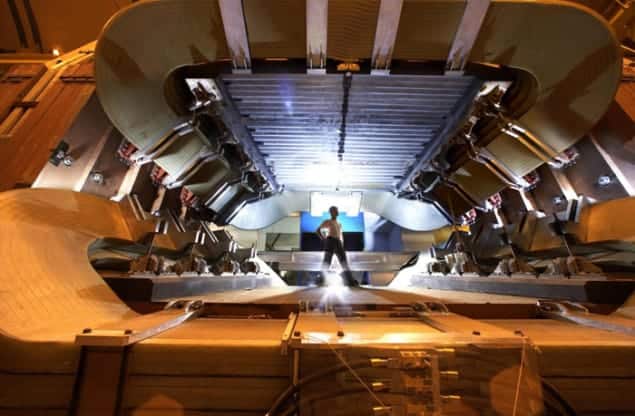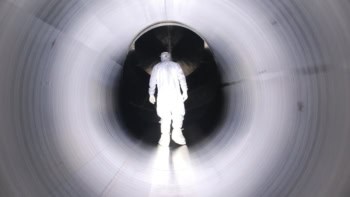
A preliminary analysis of data taken by the LHCb collaboration at the CERN particle-physics lab near Geneva casts doubt on the recent claim by physicists on the D0 experiment at Fermilab in the US that they have discovered an exotic particle containing four quarks. Dubbed X(5568), the tetraquark was believed to contain “up” and “bottom” quarks as well as “down” and “strange” antiquarks. Quarks normally group together in pairs to form mesons or threes to make baryons.
The new particle has a mass of 5568 MeV/c2 and was found in proton–antiproton collision data taken over nine years by D0, which ran on the now-defunct Tevatron collider. In a paper submitted to Physical Review Letters and posted on the arXiv server in February, the D0 collaboration identified the tetraquark with a statistical significance of 5.1σ. That is greater than the 5σ that is normally required for a discovery in particle physics.
Excess pairs
Rather than spotting the X(5568) particle itself, however, the D0 physicists identified pairs of BS mesons and pi mesons that are created when X(5568) decays. They spotted an excess of 133 such pairs above the expected background level. Each pair had a total energy of about 5568 MeV, corresponding to the mass of the tetraquark.
As X(5568) should also be produced in proton–proton collisions on the Large Hadron Collider (LHC) at CERN. The LHCb experiment – which is designed to detect B mesons – is in a perfect position to study the new tetraquark. Unfortunately, however, physicists working on LHCb have found no evidence for X(5568), despite having analysed 20 times as many BS meson events as had the D0 team.
Tetraquarks are of great interest to particle physicists because most known hadrons are either mesons, which contain a quark and an antiquark, or baryons, which comprise three quarks. The theory of the strong force – quantum chromodynamics (QCD) – allows for other types of exotic baryons with four quarks (a tetraquark) or five quarks (a pentaquark). But doing calculations using QCD is extremely difficult, so it is not clear what tetraquark or pentaquark configurations are possible.
Charmonium core
X(5568) is particularly interesting because it contains four distinct flavours of quark and antiquark. This is unlike all other known tetraquarks and pentaquarks, which all contain a charm quark/antiquark pair. This led some physicists to speculate that charmonium – a bound state of a charm quark and antiquark – creates a “core” around which tetraquarks and pentaquarks can form.
The LHCb analysis is described in a conference note on the CERN website.



